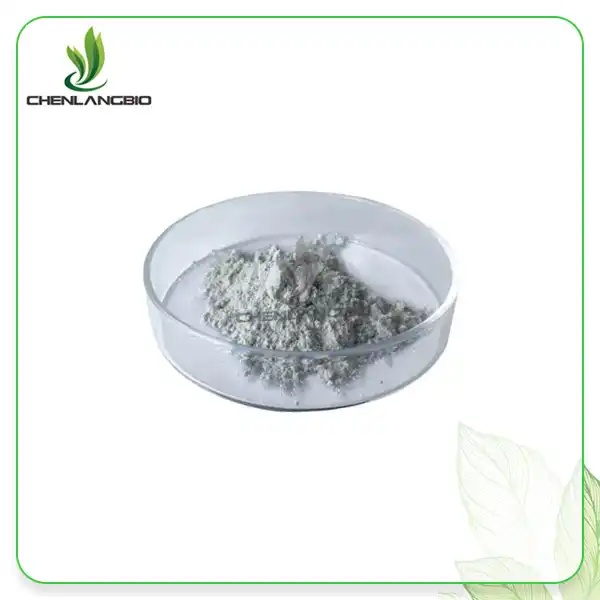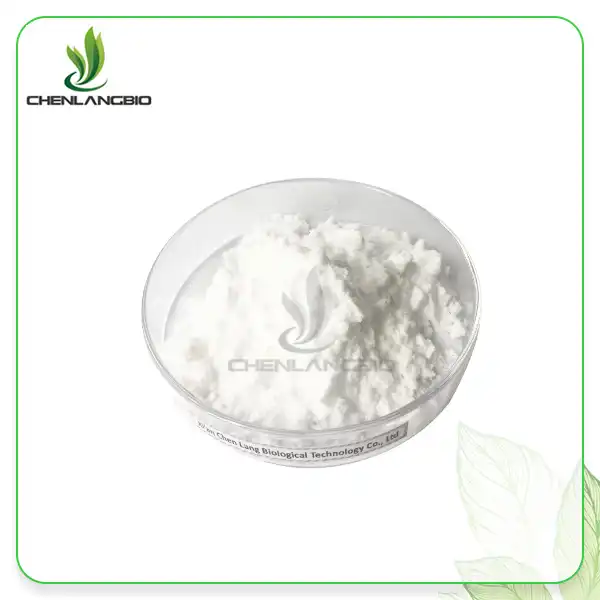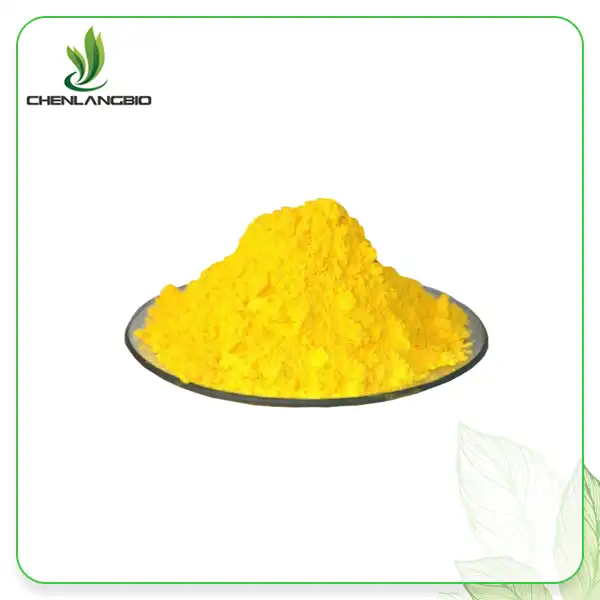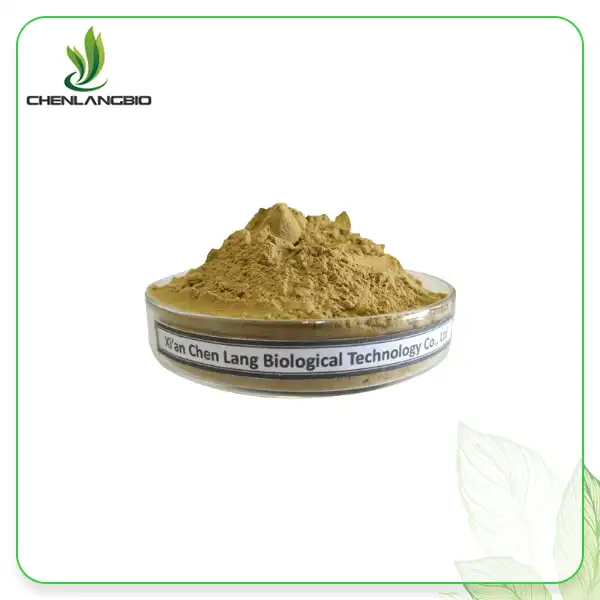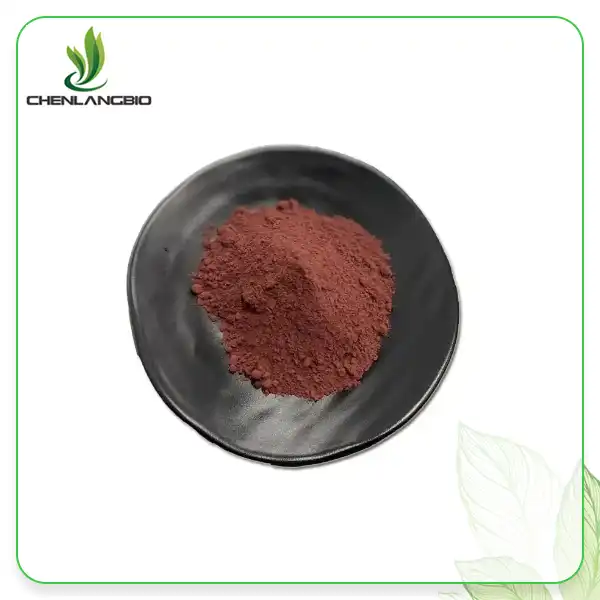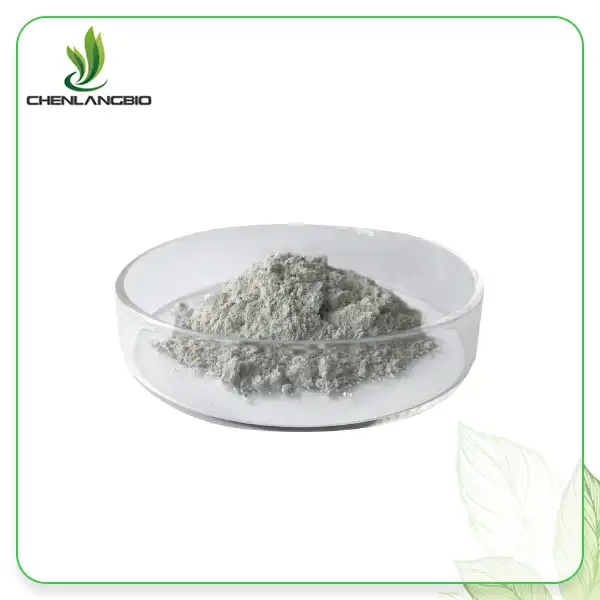Does P5P Help With Anxiety?
2025-11-24 12:55:44
Does P5P help with anxiety is a question that has gained traction among supplement brands, formulators, and consumers seeking more targeted solutions for stress and mood balance. Unlike many traditional vitamins, pyridoxal-5-phosphate (P5P powder) plays a direct biochemical role in the pathways that govern emotional regulation, making it a compelling ingredient for modern anxiety-support formulas. As chronic stress, irregular sleep cycles, and high cognitive demands increasingly shape the daily lives of consumers, interest in active vitamin B6—rather than standard pyridoxine—has grown rapidly across the nutraceutical landscape. Formulators now recognize that the active, coenzyme form of vitamin B6 may offer a more reliable way to support neurotransmitter production and stress-response pathways, especially for individuals whose metabolism struggles to convert inactive B6 into its usable form.
What makes the conversation around P5P for anxiety particularly important for supplement developers is the significant variability in how efficiently different populations metabolize vitamin B6. Genetic polymorphisms, inflammation, nutrient deficiencies, and lifestyle stressors can impair the conversion of pyridoxine into P5P, resulting in inconsistent effects from traditional B6 supplements. This inconsistency has driven many brands to explore active B6 as a more predictable option for emotional wellness formulas. In this context, P5P is emerging not only as a mood-support nutrient but also as a strategic ingredient for manufacturers aiming to build science-aligned, high-performance products in the stress-relief and relaxation categories.

What Is P5P?
Pyridoxal-5-phosphate, commonly known as P5P, is the biologically active form of vitamin B6, meaning it is the exact structure the human body uses to drive neurotransmitter production, amino acid metabolism, stress-response pathways, and hormone-related signaling. Unlike pyridoxine—the form that appears in most low-cost supplements—P5P does not require metabolic conversion before it becomes functional. This distinction is crucial when examining P5P for anxiety or any mood-related application, because ineffective conversion of pyridoxine can significantly limit the availability of active vitamin B6 in the nervous system.
From a biochemical perspective, vitamin B6 can exist in several forms (pyridoxine, pyridoxal, pyridoxamine), but only one form—P5P—serves as the coenzyme required for neurotransmitter synthesis. The body typically converts pyridoxine into P5P through a multi-step enzymatic sequence that depends heavily on PNPO enzyme activity, liver health, magnesium availability, and overall metabolic function. When this conversion process slows or becomes impaired—which is common in individuals experiencing chronic stress, inflammation, or sleep disruption—the brain may lack adequate coenzyme B6 to produce calming neurotransmitters such as GABA and serotonin.
This explains why active vitamin B6 for mood has become a significant trend across the supplement industry. For many consumers, especially those with compromised nutrient metabolism or heightened physiological stress, P5P provides a more consistent and predictable way to support emotional balance. Supplement developers now frequently replace pyridoxine with P5P in stress-relief formulations because the active form bypasses metabolic bottlenecks and delivers immediate functional availability to neurons and endocrine tissues.
A growing number of formulators also consider P5P the superior option for mood-support blends because it interacts synergistically with ingredients commonly used in anxiety formulas—such as magnesium, L-theanine, ashwagandha, and GABA—enhancing their performance through shared biochemical pathways. With active vitamin B6 already present in its coenzyme state, neurotransmitter production becomes more efficiently supported, giving brands a more reliable foundation for formulations targeting calmness, resilience, and emotional stability.
For these reasons, understanding what is P5P and why its active form matters is essential for supplement brands designing next-generation emotional wellness products.
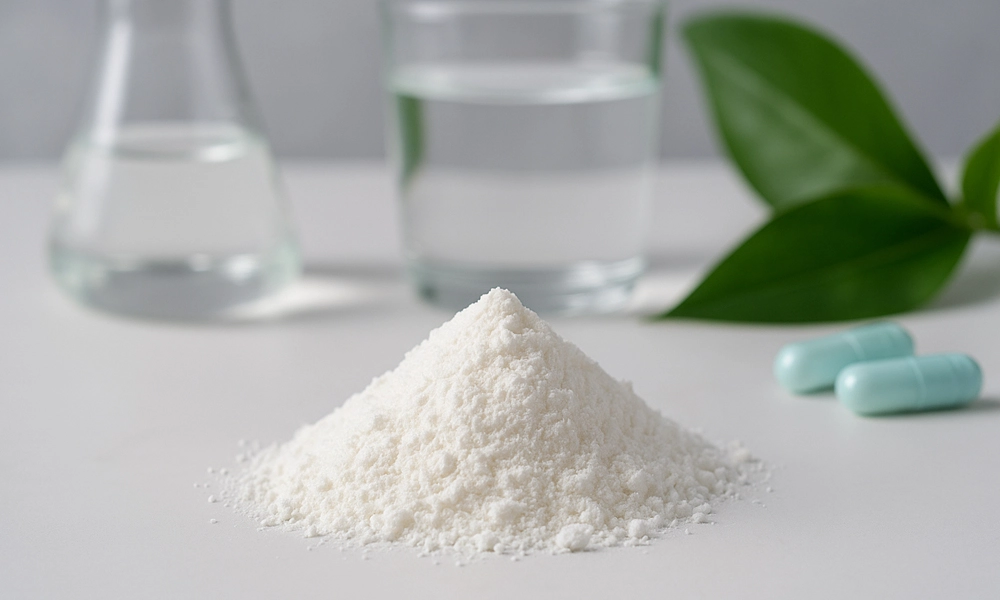
How P5P Powder Influences Anxiety: GABA, Serotonin, and Dopamine Pathways
The link between P5P and anxiety becomes clearer when examining how the active form of vitamin B6 functions inside the brain’s biochemical network. Nearly every major neurotransmitter involved in stress regulation—GABA, serotonin, dopamine, and norepinephrine—requires P5P as a coenzyme to complete its synthesis. Because these neurotransmitters collectively shape emotional balance, sensory processing, stress resilience, and the body’s ability to transition from a “fight-or-flight” state into a calmer baseline, even subtle changes in P5P availability can meaningfully affect mood.
P5P and GABA Production: The Body’s Primary Calming Mechanism
One of the strongest mechanistic explanations for does P5P help with anxiety lies in its essential role in generating gamma-aminobutyric acid (GABA), the brain’s main inhibitory—or calming—neurotransmitter. The enzyme glutamate decarboxylase (GAD) converts glutamate into GABA, and this enzyme cannot function without P5P as a required cofactor. When P5P levels are inadequate, the body struggles to shift glutamate—a stimulating neurotransmitter—into GABA, potentially leading to heightened excitability, restlessness, or tension. This imbalance is particularly relevant for individuals prone to stress sensitivity or those who experience racing thoughts at night, a pattern often observed in anxiety-prone populations.
Because active vitamin B6 directly supports this GABA-producing reaction, formulators increasingly rely on P5P when developing relaxation blends or P5P for stress formulas. This ensures that consumers who naturally convert pyridoxine inefficiently still receive adequate coenzyme support for the inhibitory pathways that regulate nervous-system quieting.
Serotonin plays a widely recognized role in emotional well-being, sleep, appetite, and general mood stability. The biochemical conversion of 5-hydroxytryptophan (5-HTP) into serotonin requires aromatic-L-amino-acid decarboxylase (AADC), an enzyme whose activity depends on P5P. Low P5P availability can therefore bottleneck serotonin production, leaving individuals more vulnerable to mood fluctuations, irritability, or heightened stress reactivity.
This mechanism helps explain why active B6 for mood support has drawn interest from practitioners working with individuals experiencing anxiety-like symptoms linked to serotonin imbalance. For supplement brands, incorporating P5P into formulas that also include 5-HTP, saffron extract, or magnesium provides a more complete biochemical environment for serotonin synthesis, giving the entire formula a more coherent physiological rationale.
P5P and Dopamine / Norepinephrine: Stress Response and Cognitive Focus
The catecholamine family—dopamine and norepinephrine—plays a central role in motivation, cognitive processing, stress resilience, and the ability to maintain mental clarity under pressure. Their synthesis follows pathways that require P5P as a coenzyme. When P5P availability is reduced, dopamine production can drop, and norepinephrine output may become unstable, creating a cycle of fatigue, difficulty concentrating, and poor stress tolerance.
Because chronic anxiety often coexists with low stress resilience and impaired focus, brands developing formulas that target both calmness and cognitive steadiness increasingly integrate P5P alongside ingredients such as L-tyrosine, ashwagandha, rhodiola, or phosphatidylserine. From a formulation perspective, this layered approach ensures that P5P supports multiple neurotransmitter pathways simultaneously, addressing not only anxiety but also the downstream cognitive imbalances that accompany prolonged stress.
Integration of All Three Pathways: Why P5P Has a Unique Biochemical Position in Anxiety Support
Unlike single-pathway herbal extracts, P5P sits at the crossroads of several essential neurotransmitter systems. This multi-pathway involvement explains why P5P for anxiety appears in more professional formulations each year. Its role is not to sedate; rather, it enhances the body’s ability to maintain proper biochemical balance. For individuals whose anxiety is linked to poor nutrient conversion, inflammatory stress, or irregular sleep cycles, providing the fully active form of vitamin B6 can offer a more predictable foundation for emotional regulation.
P5P for Anxiety: Dosage & Formulation Insights
Although the scientific literature on P5P for anxiety is still emerging, the available data provides meaningful insight into why active vitamin B6 plays such a central role in supporting emotional stability. Several human studies examining vitamin B6 and stress-related outcomes show that higher availability of active B6 correlates with improved inhibitory neurotransmission and greater resilience to psychological stressors. These findings make biological sense given that P5P is required for the synthesis of both GABA and serotonin, the two neurotransmitter systems most closely associated with anxiety modulation.
A well-publicized study conducted at the University of Reading, for instance, observed that high-dose B6 supplementation increased inhibitory neural activity in participants, effectively shifting the excitation–inhibition balance toward a more calming state. While the study used pyridoxine, researchers acknowledged that individuals with impaired conversion may not achieve the same biochemical response, which strengthens the rationale for using P5P directly. Additional observational findings also connect vitamin B6 sufficiency with improved stress tolerance, healthier cortisol rhythms, and better sleep—three factors deeply intertwined with anxiety severity. Although not all studies isolate P5P specifically, the biochemical pathways involved demonstrate that the active form is the metabolically relevant version influencing anxiety-related outcomes.
Dosage Guidelines: How Much P5P Is Used for Anxiety Support?
The optimal p5p dosage for anxiety varies depending on individual needs, metabolic efficiency, and whether the ingredient is used alone or as part of a broader emotional-wellness formula. However, industry standards and practitioner guidelines commonly fall within well-tolerated ranges that align with P5P’s biochemical role:
•20–30 mg/day for general emotional balance or mild tension
•30–40 mg/day for individuals experiencing persistent stress or sleep-disrupted anxiety patterns
•10–25 mg/day when P5P is combined with synergistic ingredients such as magnesium, L-theanine, GABA, 5-HTP, ashwagandha, or rhodiola
•5–15 mg/serving for beverages, RTD shots, and powdered drink sticks, where formulation efficiency and taste profiles require lower doses
Because active vitamin B6 for mood does not require metabolic conversion, these ranges typically achieve functional support without approaching levels associated with adverse effects. Brands formulating for populations with known conversion challenges—such as individuals with high stress load, PNPO gene variants, or liver-metabolic strain—often opt for the mid-range of these doses to ensure consistent benefit.
Formulation Insights for OEM/ODM Developers
For contract manufacturers and R&D teams building complete anxiety-support products, P5P has gained popularity not only for its neurochemical relevance but also for its formulation versatility. In capsule and tablet applications, P5P monohydrate’s predictable flow characteristics and stability make it easier to incorporate than certain herbal extracts that require granulation or taste masking. In gummies, where flavor and texture constraints limit active-ingredient concentration, P5P’s efficiency at low milligram doses provides a distinct advantage over ingredients that require substantially higher inclusion rates.
For beverages and powdered drink mixes, P5P dissolves consistently when used at standard functional levels, allowing formulators to build P5P for stress blends that pair well with magnesium, adaptogens, or nootropic compounds. Because it enhances several neurotransmitter pathways simultaneously, P5P is often used to “anchor” a formulation, providing essential cofactor support across multiple biochemical mechanisms. This gives brands a more cohesive product story and allows for cleaner, more transparent label structures.
When designing mood or anxiety blends, developers frequently position P5P as a foundational ingredient that supports the action of other calming compounds. For example:
♦P5P + Magnesium: Supports GABA pathways from two biochemical angles
♦P5P + L-theanine: Enhances relaxation without sedation
♦P5P + 5-HTP: Strengthens serotonin production efficiency
♦P5P + Ashwagandha or Rhodiola: Combines stress-response modulation with neurotransmitter support
These synergies reflect how manufacturers build formulations that address both the neurochemical and physiological dimensions of anxiety. By integrating P5P strategically, supplement brands can produce formulas with stronger scientific grounding and more consistent consumer outcomes.
Who Benefits Most From P5P?
Who May Benefit Most From P5P for Emotional and Stress Support
Although P5P supports neurotransmitter balance for a wide range of individuals, certain groups appear to experience more noticeable improvements due to underlying metabolic characteristics. People with impaired conversion of pyridoxine—whether from PNPO gene variations, chronic stress, insufficient magnesium intake, or inflammation—are often the ones who respond best to active vitamin B6 for mood because they gain direct access to the coenzyme required for neurotransmitter synthesis. Individuals dealing with sleep disturbances, cyclical hormonal fluctuations, or stress-induced cognitive fatigue may also find P5P particularly useful due to its central role in serotonin and GABA pathways.
Women experiencing PMS-related mood changes form another group that tends to respond well to active B6, as their hormonal cycles naturally increase the metabolic demand for vitamin B6–dependent pathways. Similarly, busy professionals or students under sustained cognitive load may benefit from improved catecholamine balance, a pathway also supported by P5P. For these populations, using the active form can provide more predictable emotional steadiness compared with relying solely on traditional B6 supplements, whose conversion efficiencies vary widely from person to person.
Why Modern Supplement Brands Prefer P5P Over Pyridoxine
The shift toward P5P for anxiety and emotional wellness has been driven not by marketing trends but by biochemical reliability. Brands that prioritize evidence-based formulations understand that pyridoxine often delivers inconsistent physiological effects because its conversion depends on multiple enzymatic steps, each vulnerable to lifestyle, health status, and genetic variability. P5P bypasses these biochemical roadblocks entirely, giving formulators a more dependable foundation for building high-performance stress-support products.
From a manufacturing perspective, P5P monohydrate offers additional advantages: stable handling characteristics, predictable assay performance, and efficient milligram-per-serving usage, which is especially important for high-volume formats like gummies, RTDs, and powder sticks where space is limited. For formulators aiming for synergistic blends, P5P functions as a biochemical “hub,” connecting pathways influenced by magnesium, theanine, GABA, adaptogens, and several nootropic compounds. This allows brands to design formulas with scientifically coherent mechanisms rather than collections of unrelated calming agents.
As consumer expectations shift toward more sophisticated stress-management products, active B6 aligns perfectly with trends toward transparency, clinical grounding, and efficiency per milligram. This explains why P5P is rapidly becoming a standard component in next-generation emotional wellness formulas.

Why Choose XI AN CHEN LANG BIO TECH CO., LTD as Your P5P Supplier
As global demand for advanced mood-support ingredients continues to rise, securing a trusted supplier of high-quality P5P becomes essential for maintaining product integrity and brand reputation.As an experienced manufacturer of pharmaceutical raw materials and health product raw materials, XI AN CHEN LANG BIO TECH CO., LTD offers:
•High-purity 98–99% P5P monohydrate;
•Factory-direct pricing and stable long-term inventory;
•Full documentation: ISO, Halal, Kosher, GMP, COA, MSDS, TDS;
•Batch-to-batch consistency confirmed by HPLC testing;
•Fast global delivery with export-ready packaging;
•Flexible MOQ suitable for both new brands and large-scale manufacturers;
Technical support for capsules, tablets, drinks, gummies, and powder formulas;
📩 For COA, samples, or quotations:
Email: admin@chenlangbio.com
Whatsapp: +86-17782478823
Our team is ready to support your next-generation emotional wellness product with reliable, science-backed P5P raw materials.
Conclusion – Does P5P Help With Anxiety? A Professional and Science-Grounded Perspective
When viewed through the lens of biochemistry, neurophysiology, and practical formulation science, the answer to does P5P help with anxiety becomes considerably clearer. P5P supports the very neurotransmitter systems most directly involved in calming the nervous system—GABA, serotonin, and dopamine—while also contributing to the metabolic processes that influence stress resilience and emotional steadiness. Its role as a required coenzyme gives it a level of functional immediacy that pyridoxine simply cannot match, particularly among individuals with impaired vitamin B6 conversion or heightened neurological demand.
Although P5P powder is not a standalone treatment for anxiety, the mechanistic rationale behind its inclusion in emotional wellness formulas is exceptionally strong, and the ingredient has earned its place as a reliable component in stress-support, sleep-support, and mood-balancing formulations. For supplement brands, product developers, and procurement teams seeking ingredients that offer both scientific credibility and real-world consistency, active vitamin B6 provides a distinct advantage over its inactive counterpart. Please feel free contact our email: admin@chenlangbio.com if you want more information aboout P5P powder.
Send Inquiry
Related Industry Knowledge
- Is Ajuga turkestanica the Same as Turkesterone?
- What Are the Key Benefits of Using Premium Vitamin D3 Powder in Supplements?
- What Are the Potential Health Benefits of L-Ergothioneine?
- What is the Best Ergothioneine Supplement
- What Percentage of Magnesium Ascorbyl Phosphate is Effective
- Is 4-Hexylresorcinol Safe
- Does Coenzyme Q10 Powder Help With Weight Loss
- Quaternium 73 for Acne
- Is Kava kavalactone Powder Good for Anxiety
- How much Olive Leaf Extract Powder Oleuropein Should I Take



